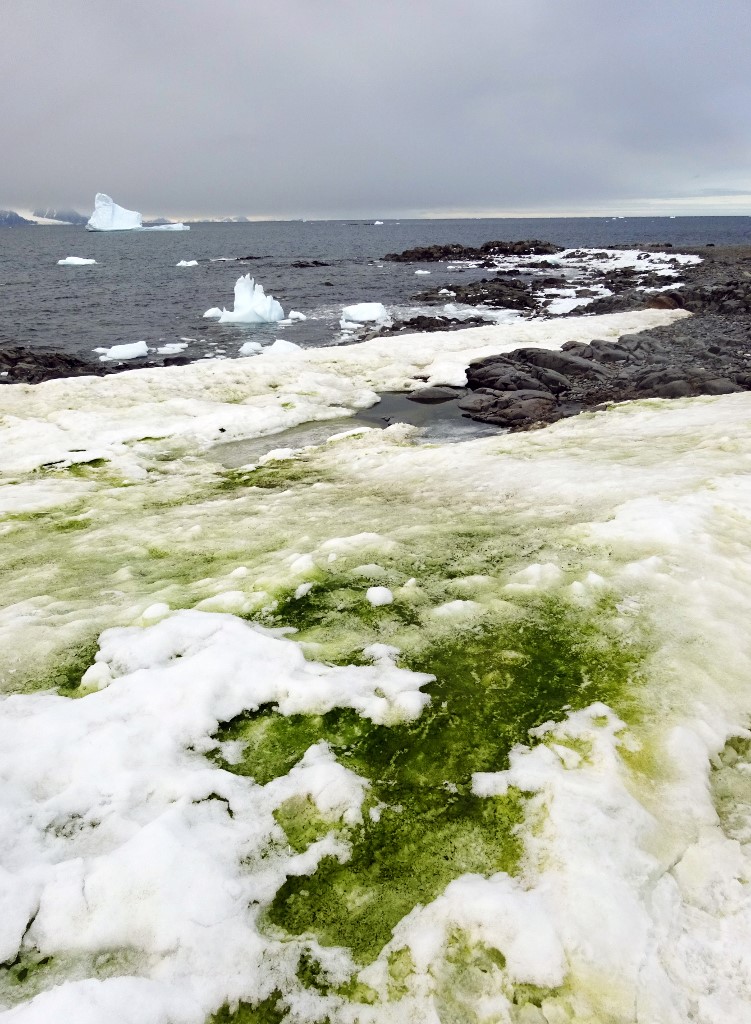Penguins and snow. That’s the image that comes to people’s minds when they think of Antarctica. Search for photos online and you get glacial landscapes that are mostly white. But it turns out that the southernmost continent isn’t as monochromatic as we think, at least not anymore. It’s turning green, and all because of climate change.
Apart from melting ice sheets and dying penguins, global warming is now also causing snow in Antarctica to turn green, a new report published in the scientific journal Nature Communications on Wednesday, May 20, says. In some areas, the green hue is even visible from space. This is a result of algae bloom — as rising temperatures turn solid ice into slush, aquatic organisms like algae thrive in the melting snow.
Despite being the most barren continent, there’s actually some plant life in Antarctica. Mosses and lichens are the two largest visible kinds of photosynthesising organisms there. They’re also the most studied. While past explorers have observed the presence of algae in Antarctica, they were never the subject of large-scale research, until now.
Using satellite imagery collected over two years by the European Space Agency’s Sentinel-2, as well as on-the-ground observation, researchers from the University of Cambridge and the British Antarctic Survey observed 1,679 separate green algae blooms across the Antarctic peninsula, amounting to a total surface area of 1.9 square kilometres.
While 1.9 square kilometres of land mass doesn’t seem that significant, Matt Davey, an algal physiologist at the University of Cambridge, told AFP that “in Antarctica where you have such a small amount of plant life, that amount of biomass is highly significant.”
Compared to the rest of the planet, polar regions like Antarctica are experiencing way more rapid heating. As global temperatures continue to rise, the amount of algae bloom will likely increase as well. This means even more green snow.
The new report suggests that microscopic algae can help reduce carbon dioxide levels in Antarctica (estimating the amount of carbon dioxide absorbed by the algae to be equivalent to 875,000 average UK petrol car journeys), but experts believe the effect won’t be significant.
The increase of algae blooms could also reduce local albedo, a measure of how well a surface reflects radiation from the sun. While white snow can reflect 80 percent of radiation on its surface, green snow only reflects around 45 percent. Reduced albedo means more radiation is absorbed, which will cause temperatures to increase. However, researchers do not think this will significantly impact Antarctica’s climate.

What the proliferation of algae can do is create new habitats or even a new ecosystem, due to their interaction with existing organisms. The team of researchers found that the algae have already formed close bonds with some fungal spores and bacteria, and that the majority of algae blooms are located near penguin colonies, where bird excrement serves as fertiliser.
“Studies like ours are really important as they increase our understanding of complex connections between these species and the more we understand, the more we can protect our planet and these fragile ecosystems that could be lost or changed forever,” Davey said in a YouTube video posted by Cambridge University.
The researchers plan to carry out similar studies for red and orange algae in the future to map the blooms across the whole continent.
from VICE https://ift.tt/2Y8nib7
via cheap web hosting
No comments:
Post a Comment